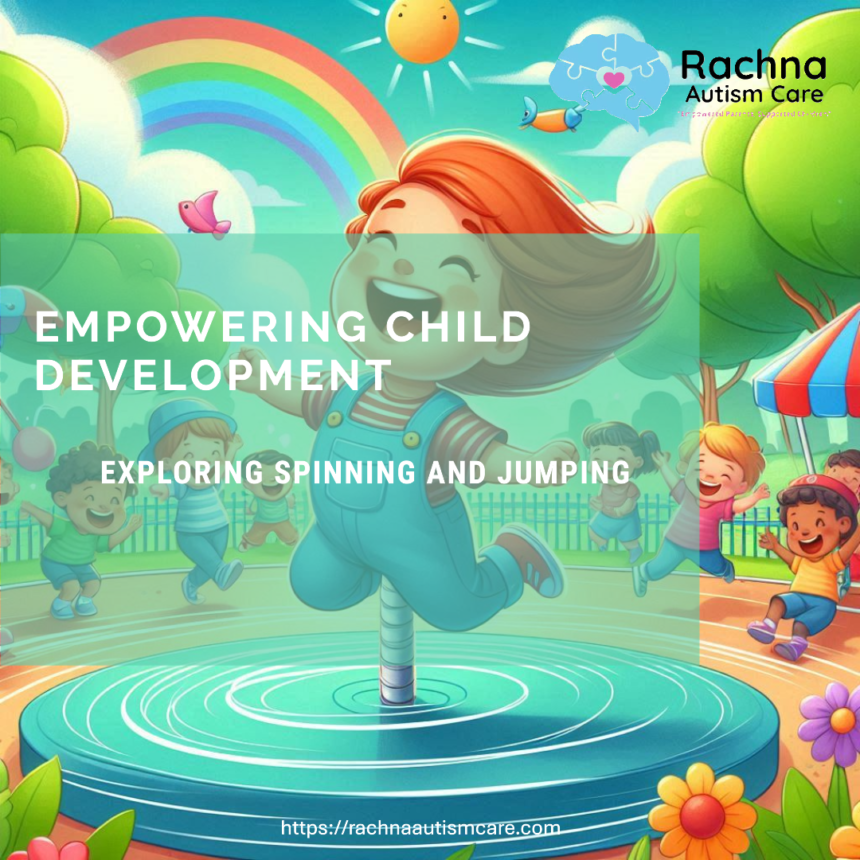Why Do Autistic People Enjoy Playing with Spinning Things and Jumping?
Autism is a spectrum disorder that affects the way people’s minds perceive the world, interact with others, and react towards something regarding sensory input. One of the most common behaviors noticed in autistic individuals is an affinity for playing with spinning things and repetitive jumping. Such actions might be unusual or puzzling to someone without an autism background, but they can be explained by the way the autistic brain interprets information. Here in this blog, we will explore why most people with autism love spinning things and jumping time and again, looking into the reason behind common stimming behaviors.
Understanding Stimming in Autism
To be able to understand better why autistic individuals like spinning things and jumping, we will need to know first what stimming is. Stimming, or self-stimulatory behavior, refers to repetitions of such actions or movements that are useful in regulating sensory inputs, reducing stress, or managing emotions. It is a natural part of the autistic experience. Stimming can present in various forms such as hand-flapping, rocking, vocal repetitions, or focusing intensely on spinning objects.
For many autistic people, stimming is a mode of creating predictability about the otherwise overwhelming sensory environment; soothing anxious feelings or offering sensory feedback to the brain, which it finds enjoyable, such as in the context of autism and spinning objects and the autistic jumping that is close to the sensory regulation need of the individual.
The Fascination with Spinning Objects
One of the most common presentations of stimming in a child with autism is that of an interest in spinning objects. It might be a toy, a wheel, or even a fan spinning round and round. Many children with autism find comfort and joy in the repetitious motion of items spinning around. Why is that?
Predictable Patterns: Most autistic-like to play repetitive and predictable games. Things that spin have a predictable motion and can feel very soothing. The autistic brain may be more attuned to patterns and repetition, making it appealing to enjoy this spinning action.
Visual Stimulation: Watching something spin can be the most vibrant form of visual sensory. The movement can be very hypnotic and creates a rhythm for the visual pattern that calms the mind. It is why many on the spectrum get fascinated with spinning tops, fidget spinners, and watching wheels turn.
Regulation of the Senses: For some children, their sensory systems might be either too sensitive or too insensitive. The spinning toy offers a specific kind of stimulation to the sensory system and can bring it into balance. This becomes crucial in very chaotic or overwhelming situations when the intense focus on the spinning toy creates order.
The Appeal of Jumping in Autism
In addition to the movement of objects, another fixed area of interest in autism is repetitive jumping. Autistic jumping often can be a kind of stimming but also may be employed for a variety of other sensory needs and emotional regulation.
Sensory Feedback: Jumping provides quite robust proprioceptive input. The body’s sense of where it is and how it is moving, called proprioception, is often considerably less developed in autistic children. The powerfully positive feedback signal while jumping helps them understand both the location of their body and where it is moving.
Other than releasing stress, jumping is also one of the strategies often used to help an autistic child release some excess energy or overwhelming feelings. When excited or tense, jumping can be used as a physical release to reduce pent-up tension and over-stimulation.
It is also essential to note that jumping may sometimes simply signify joy and excitement. For many autistic users, jumping is one way of pure happiness and can be the only method to physically show some excitement in a situation where verbal expression might be difficult to achieve.
Ways of Misconception About Spinning and Jumping
Such behaviors can seem unusual, excessive, or even problematic from an outsider’s perspective. However, it is important to recognize that for the autistic, such stimming behaviors, including spinning objects or jumping, have a positive function in self-regulation. They could bring comfort and stability in a world that for autistic people feels overwhelming.
Where perhaps you might be tempted to try to intervene or stop these behaviors, actually doing so can have damaging effects if it removes an essential tool for self-soothing. On the contrary, in being mindful of and accommodating those needs, the difference for well-being can be huge. A good example would be allowing for safe preferred items for spinning, for example, or permitting a sensory break that could involve jumping.
Support autism with sensory needs. Lastly, using the correlation of spinning objects with autism and jumping with autism, another better way for inclusion is development. These moves can be seen as a means of communication and self-care rather than weird or disturbing. Parents, caregivers, and educators need to support autistic clients by providing safe opportunities to use these capacities.
For example, introducing sensory tools, such as fidget spinners, sensory balls, or trampolines, can help meet those needs in a controlled and safe way. In addition, being allowed to jump or spin without judgment would make autistic individuals very comfortable and happy.
Conclusion
autism and spinning objects, as well as autistic jumping, are not behaviors alone but rather important tools for self-regulation and expression. By embracing the odd behaviors and what they seem to entail, we can foster a very accepting and supportive environment for the autistic person. Rather than learning to suppress them, we might learn how to celebrate these behaviors as meaningful aspects of the autistic experience, offering insight into just how unique the interactions and enjoyment of the autistic individual with the world around him are.


